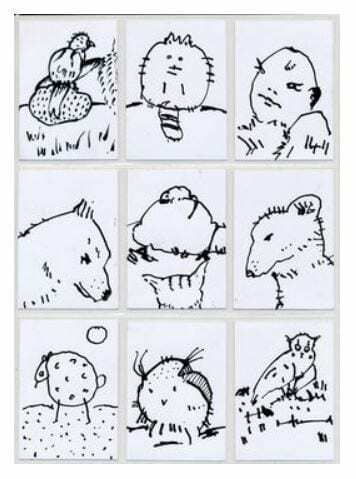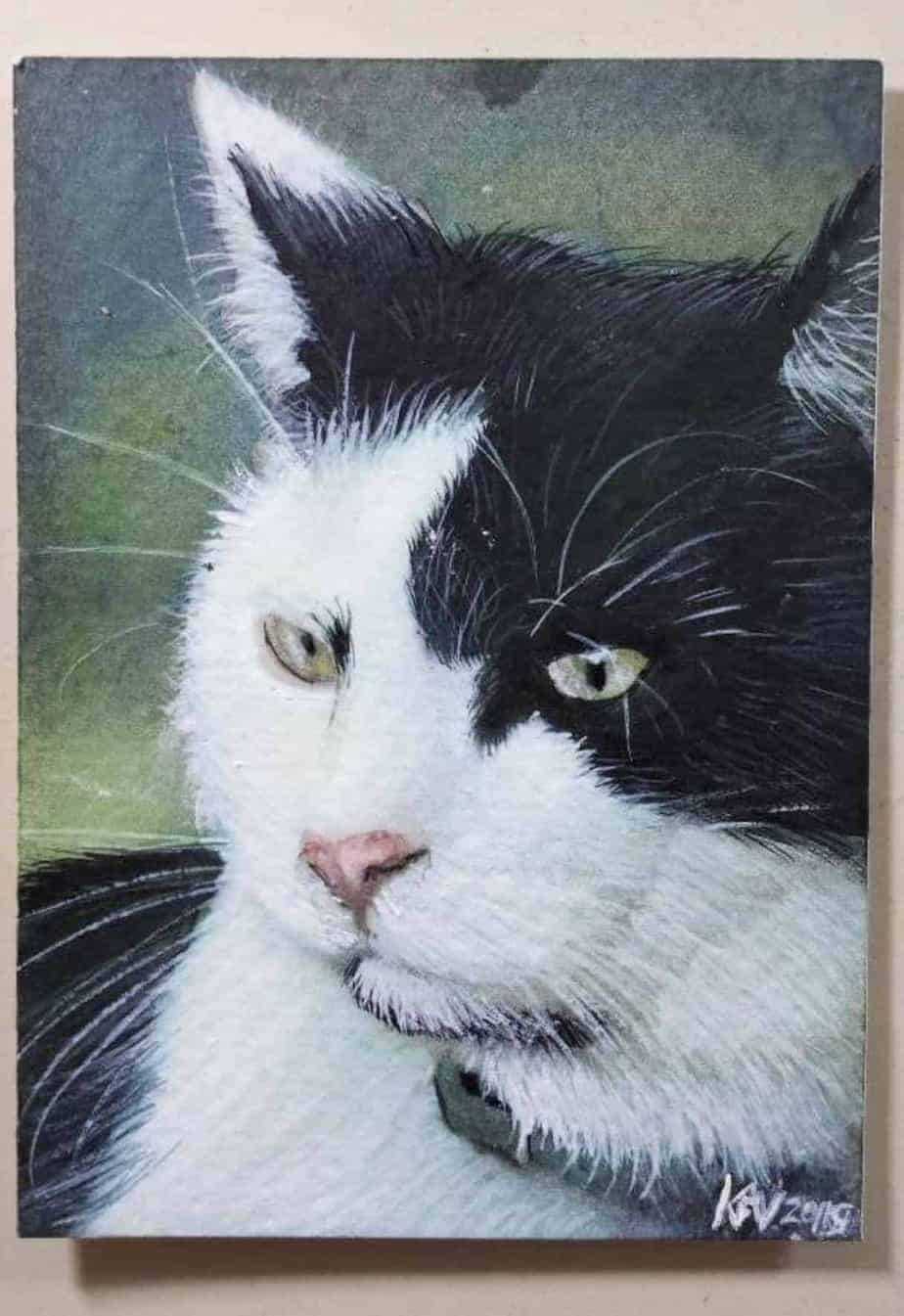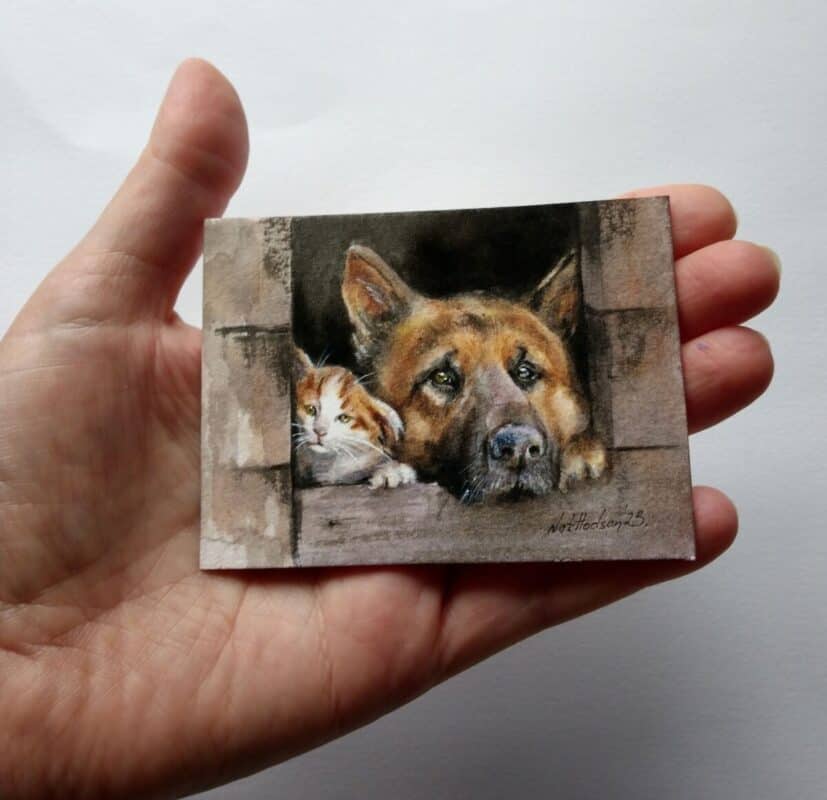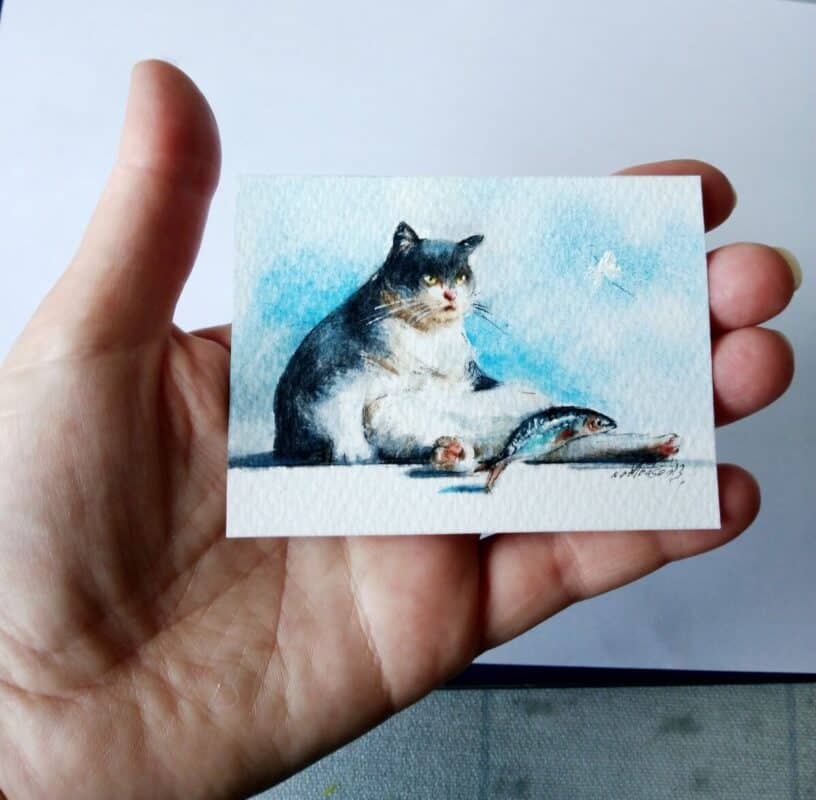Art Talk
What exactly are ACEO’s and ATC’s
Whilst researching artists and makers all over the UK, I discovered an interesting, collectable movement that I’d never encountered before. I became completely fascinated by ACEO’s and ATC’s, and have started a collection of these little gems myself. What on earth am I blathering on about?…… let me explain.
ACEOs stands for “Art Cards Editions and Originals”. They are small, original works of art, that are released as either one off pieces, or editions. They must be 2.5 x 3.5 inches. This standard size is widely recognised by collectors. Any sizes larger or smaller would not qualify as an ACEO. The artwork should include the artist’s details on the reverse and be an original art piece.
Other information on the back could be, title or name of the artwork, medium, limited edition number and date of completion. I personally favour ACEO’s completed using acrylic paints or water colour. Be warned that some artwork listed as ACEO are actually a limited edition print, classed as editions, and I would advise being careful when making your purchase if it’s small original versions you are after.


Are ACEO’s and ATC’s the Same Thing?
Many people make the mistake of thinking that these two medium’s are one and the same. This is not the case. In fact, purists do not approve of ACEO’s, as ATC stands for Art Trading Cards. ATC’s were never meant for sale, and were created to give to other artists for inspiration. Cards are produced in various media, including pencils, pens, markers, watercolour, and acrylic paint. A medium that is more rare is paper media, in the form of collage, paper-cuts , found objects, or even metals or cloth.
“While some artists were happily trading cards for free, another group of artists realized there was a market for these miniature art works and quickly made their cards available for sale at remarkably low prices.” (emptyeasel.com)
“Art Cards Editions and Original, or ACEOs for short, debuted and quickly became a worldwide success.” (emptyeasel.com)
“Cards are sold either as originals or editions. If it’s a print it should say so, and it should be numbered and signed usually on the back.” (emptyeasel.com)
“The largest venue for buying and selling ACEO’s and ATC’s by the way, is eBay.” (emptyeasel.com)
You can also sign up to join the ACEO & ATC collectors club. Join the mailing list at Kylie Fogarty Art Studio to get regular updates and exclusive offers right into your inbox.
https://www.kyliefogarty.com/aceo-atc-collectors-club/
The History of the Artist Trading Card
The Artist Trading Cards movement originated in Europe in 1997. The initial idea was the brainchild of well known artist M Vänçi Stirnemann created a collection of 1200 cards for an exhibition in Zurich, Switzerland. During the exhibit, he encouraged other artists to produce their own art cards and organise swap or trading events, either in person or online. There are now many swap meets and online trading sites all over the world.
Only a few weeks after the Zurich exhibition, the idea when viral (in the physical sense), by means of a Canadian artist by the name on Don Mabie. He organised a trading session for ATC’s in September of the same year at the College of Art & Design – Calgary, Canada.
Today there are regular trading sessions worldwide. If you’re an artist, looking to get involved in the ATC movement, and make new contacts, you can Join an ACEO Facebook group which is a great place to start.
There are a few basic rules to abide by, in order to create a true ATC:
- Artist Trading Cards are miniature works of fine art. The ideal size format would be 64mm x 89mm. Similar in size to the highly collectable baseball cards.
- They must be original works, strictly adhering to copyright legislation.
- To qualify as a true art trading card, the small artworks must be signed and dated on the reverse. Information such as media (mixed media, oil, acrylic paints, watercolour etc) Artist name and country of origin are often included. Some artists even include contact details and web address. This has the added advantage of making these artcards as useful as a business card when attending a trading session or miniature exhibitions.
- There are no restrictions when it comes to trading card format. The artcard subjects vary, and styles range from from traditional artwork to conceptual art. They offer a fantastic opportunity for aspiring artists, allowing them to enter a shared network of talent worldwide and really make their mark in the art world.
The popularity of the artist trading cards has meant that the medium has become highly collectable. It wasn’t long before artists began selling their works, and the Artist Trading card movement, that began with in Zurich, Switzerland with Stirnmann bloomed into the ACEO’ and ATC’s movement we know today. This spread awareness of the artcard as a collectible miniature and offered everyone the opportunity to acquire their own miniature masterpieces.
I must admit, my soft spot is for the ACEO. I treasure each miniature painting I acquire and marvel at the work, talent and dedication that went into creating it. I have several quality cards, from Europe, Canada and even as far a field as Australia. I highly recommend you checking out these beautiful tiny pieces for yourself. You never know, it could be your first step into the art world. Read our blog post featuring one of my favourite British ACEO artists, Nataliya Hodson here




Hi Sara, thank you so much for the mention and link to my pages about these wonderful small format art. They are wonderful to create and collect aren’t they? Best wishes Kylie
You’re more than welcome Kylie, and yes….. I have been fascinated by them ever since I discovered the medium back in 2019, quite by accident. There is a real community on Ebay, of all places!